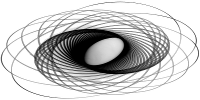July 2004 – July 2007: Detection of Design Intent in Complex Approximate Geometric Models. EPSRC GR/S69085/01. PI: F. C. Langbein. £123,639.
The project aims to investigate methods for the detection of design intent in complex geometric models in terms of approximate geometric regularities. Many CAD applications like reverse engineering, and data exchange create approximate models which do not explicitly contain information about their design intent. By detecting design intent automatically the approximate models can be improved and applications can handle the models on a higher abstraction level for modification and analysis. As the regularities may only be approximately present in the model it is likely that a set of detected regularities contains many inconsistencies and it may represent ambiguous interpretations of the model. Creating a hierarchical decomposition of the model into meaningful sub-parts (e.g. sets of congruent features) and detecting appropriate regularities in the decomposition is likely to reduce the ambiguity by considering the topological structure of the model. In order to make consistent decisions about which regularities should be used to describe the design intent intelligent selection methods are required. For this relatively simple probability distribution based methods and more advanced neuro-fuzzy systems with a more transparent decision process and the ability to learn about likely regularity selections will be considered.
![]() This work is licensed under a Creative Commons Attribution-NonCommercial-ShareAlike 4.0 International License.
This work is licensed under a Creative Commons Attribution-NonCommercial-ShareAlike 4.0 International License.
